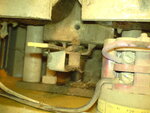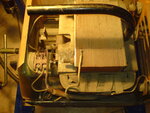Andrei917
Newbie level 5
Hi, I have a 127V - 24V transformer, 500VA. I use it on a workbench for destructive tests, like to see if some component will "blow" or catch on fire. The problem is that I'm forcing that transformer and it gets really hot, because sometimes the circuit gets short circuited. I was wondering if it possible to make a current limiter to put between the wall socket and the transformer, it should allow a maximum current of 3.5A @ 127V.
I could use a big resistor, or a lamp, but then I will be throwing away almost 500w of useless heat. I don't wanna cut the wave with a dimmer or something like that, because it will destroy the sine wave.
Someone told me I could use a inductor or choke to limit that current, but I thought these things only made the current changes "slower".
If someone could give me an idea about how to make an inductor, I'm not sure if I should use it in series with my 24v transformer, or maybe a isolation transformer with a saturated core.
I could use a big resistor, or a lamp, but then I will be throwing away almost 500w of useless heat. I don't wanna cut the wave with a dimmer or something like that, because it will destroy the sine wave.
Someone told me I could use a inductor or choke to limit that current, but I thought these things only made the current changes "slower".
If someone could give me an idea about how to make an inductor, I'm not sure if I should use it in series with my 24v transformer, or maybe a isolation transformer with a saturated core.

